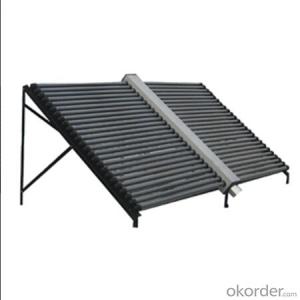Pika Solar Inverter
Pika Solar Inverter Related Searches
100w Solar Panel With Inverter Best Solar Panel Inverter 5000 Series Cast Aluminum Plate Portable Solar Panel Inverter First Solar Series 6 Module 12 Volt Solar Panel Inverter Plastic Solar Lanterns Buy Solar Panel Inverter Solar Panel Inverter Cost Solar Panel Without InverterHot Searches
Type Of Inverter For Solar Types Of Inverter For Solar Used Solar Inverter For Sale Inverter Size For Solar System Solar Edge Inverter For Sale 5kw Solar Inverter For Sale Solar Inverter For Sale Solar Inverter For Battery Solar Inverter For Split Ac Solar Inverter For Laptop Solar Inverter For Fridge Solar With Inverter Price Solar Inverter With 2 Battery Solar Inverter Price In China Best Solar Inverter In China Solar Inverter Price In Dubai Solar Inverter Price In Uae Solar Inverter Price In Kenya Solar Inverter Price In Kerala Solar Hot Water Collectors For SalePika Solar Inverter Supplier & Manufacturer from China
Okorder.com is a professional Pika Solar Inverter supplier & manufacturer, offers integrated one-stop services including real-time quoting and online cargo tracking. We are funded by CNBM Group, a Fortune 500 enterprise and the largest Pika Solar Inverter firm in China.Hot Products
FAQ
- A solar inverter works by converting the direct current (DC) electricity produced by solar panels into alternating current (AC) electricity that can be used to power household appliances and be fed into the electrical grid. It performs this conversion by using electronic components, such as transistors and capacitors, to change the voltage and frequency of the electricity. The inverter also monitors the solar panel's output and adjusts its operation to ensure optimal performance and efficiency.
- A solar inverter plays a crucial role in the overall efficiency of a solar system. It converts the direct current (DC) electricity generated by solar panels into alternating current (AC) electricity that can be used to power household appliances and feed into the grid. By efficiently converting and optimizing the electricity output, a solar inverter ensures minimal power losses and maximizes the system's overall efficiency.
- A solar inverter plays a crucial role in reducing carbon emissions by converting the direct current (DC) electricity generated by solar panels into alternating current (AC) electricity that can be used to power homes and businesses. By enabling the integration of solar power into the electrical grid, solar inverters help to replace conventional fossil fuel-based electricity generation, which is a major source of carbon emissions. This shift towards clean and renewable solar energy helps to reduce carbon emissions and mitigate the adverse effects of climate change.
- The role of transformerless design in a solar inverter is to eliminate the use of a bulky and costly transformer, which helps reduce the overall size, weight, and cost of the inverter. Additionally, a transformerless design allows for higher efficiency and improved performance of the solar inverter.
- Generally a large grid-connected photovoltaic power plant will have several inverters
- Group is the use of a number of grid-connected inverter and grid-connected AC power grid, the advantage is the loss of small, low cost of the cable (because the PV cable is more expensive), eliminating the cost of the convergence box, and multiple
- Yes, a solar inverter can be used with solar-powered electric fences. Solar inverters are used to convert the direct current (DC) produced by solar panels into alternating current (AC) that can be used to power various electrical devices, including electric fences. By connecting a solar inverter to the solar panels of a solar-powered electric fence system, the DC power generated by the panels can be converted into the AC power required to operate the electric fence.
- Some indicators of a faulty solar inverter include a complete loss of power generation, inconsistent or fluctuating power output, unusual noises or smells coming from the inverter, error messages or warning lights on the display panel, and physical damage or overheating of the inverter unit.
- Yes, a solar inverter can be used in regions with high altitude conditions. However, it is important to consider certain factors such as temperature, air density, and potential voltage fluctuations that can affect the performance of the solar inverter at high altitudes. Specialized inverters or adjustments may be required to ensure optimal functioning in such conditions.















































